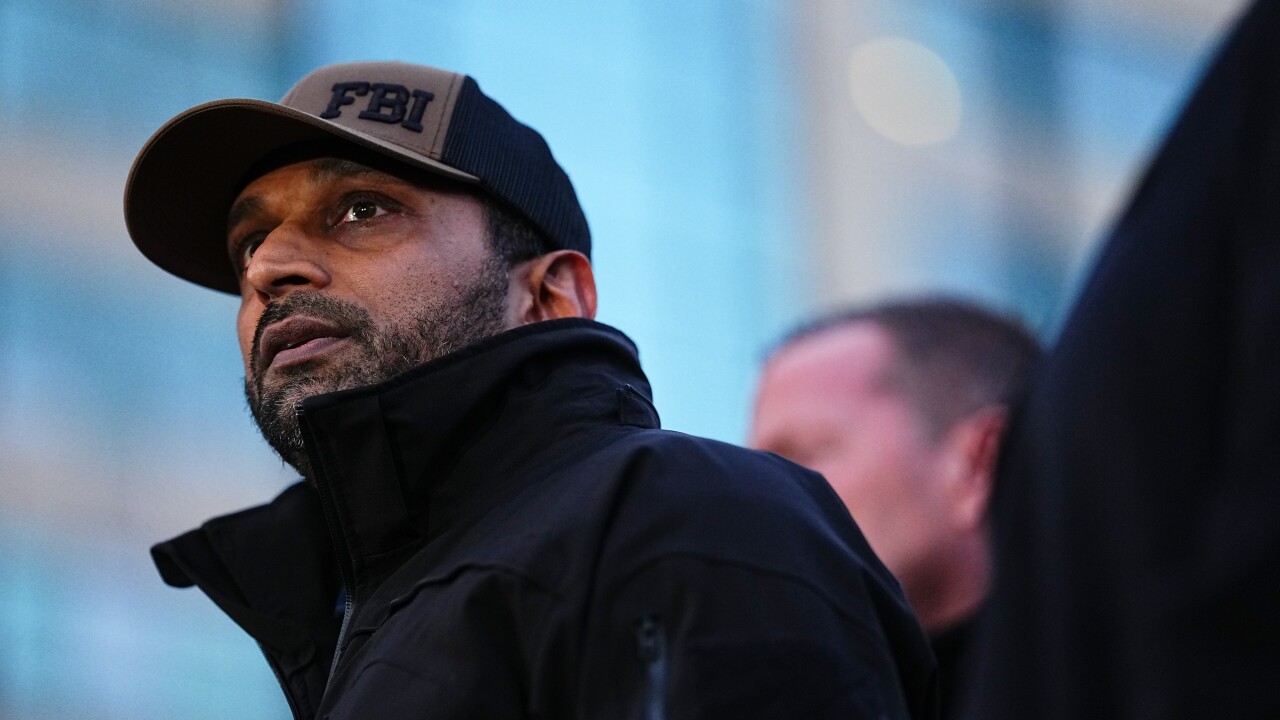-
Customers used a remote capture service developed for Apple Inc.'s iPhone to deposit $1.5 million into their accounts in the first three days after USAA Federal Savings Bank introduced it.
August 20 -
Fiserv Inc. is evaluating a check imaging system that enables consumers to deposit checks using their mobile phones.
July 29 - Texas
USAA Federal Savings Bank is expected to introduce a retail remote deposit capture application this week for Apple Inc.'s iPhone, yet another step in the single-branch financial company's mission to promote mobile banking services.
June 22 -
The Sausalito, Calif., mobile banking software company mFoundry Inc. has added a remote deposit feature from Mitek Systems Inc. to the application it offers for Apple Inc.'s iPhone.
February 27 -
Mitek Systems Inc. said Thursday that it has developed a version of its remote deposit software to run on Apple Inc.'s iPhone.
October 3
Bank of America Corp. is planning to test a service that would enable customers to deposit checks electronically with mobile phones, a move that could transform a niche application into a mainstream offering.
B of A is not the first to offer mobile remote capture to consumers, but when the anticipated test kicks off this year it will almost certainly be the biggest, and that kind of market clout could prompt other banks to follow suit, according to analysts.
"I think B of A entering the fray is by definition a game-changer," said Bob Meara, a senior analyst at the Boston market research company Celent.
Nicole Sturgill, the research director for delivery channels at TowerGroup, an independent research firm owned by MasterCard Inc., agreed. "This will be a driver for other top 10 banks to do this," she said.
According to several people familiar with the project, Bank of America expects to initially test the service as an upgrade to its existing mobile banking application for Apple Inc.'s iPhone. It will likely expand the test next year to include users of Research in Motion Ltd.'s Blackberry devices and phones that use Google Inc.'s Android operating system.
The service would let people use the phones' built-in cameras to photograph the front and back sides of checks. The software transmits the images to the bank, which processes the electronic deposits.
B of A will be following USAA Federal Savings Bank, which in August became the first U.S financial company to offer a consumer remote deposit service for mobile phones by upgrading its existing iPhone application. The $35.4 billion-asset company provides financial services to 7.2 million members of the U.S. military and their families.
By all accounts, the USAA service has been a big hit. In the first six weeks that it was available, about 270,000 USAA members installed the updated iPhone application, and about 40,000 of them have used the software to deposit more than 100,000 checks worth a total of $61 million, according to Jeff Dennes, USAA's executive director of mobile. The San Antonio company plans to provide the mobile deposit service to Blackberry and Android users in the first quarter of 2010.
Dennes said users deposited a daily record $2.2 million through the iPhone app on Sept. 30.
To be sure, USAA serves a unique market — half of its 1 million mobile users are active-duty military personnel. A service that lets people make deposits from just about anywhere is well suited for a customer base that can be deployed just about anywhere.
But USAA's deposit volume is something that will likely make banking executives "wake up," said Lani Hayward, the executive vice president of creative strategies at Umpqua Holdings Corp. in Portland, Ore.
The $8.8 billion-asset Umpqua plans to test its first mobile banking application next quarter, offering the standard capabilities such as checking balances and transactions. Hayward said the banking company is also considering adding remote capture capabilities, though it has no definite plans to do so.
"Basic online banking services through phones didn't move the needle," Hayward said. "Mobile applications that are starting to come out now will be much more effective in actually changing consumer behavior."
Bank of America declined to provide an executive to discuss its mobile banking strategy, though B of A spokeswoman Tara Burke said "we continue to look at new technologies to make banking easier for customers."
As the largest bank in the country by assets, B of A has the kind of heft that other banks cannot ignore, and its test of mobile remote capture will be the biggest endorsement by far of this emerging technology. According to data released in March by ComScore Inc., a digital marketing firm, about 35% of all U.S. consumers using their phones for financial services were doing so with Bank of America, well ahead of any other bank.
(JPMorgan Chase & Co. followed with 12% share; Wells Fargo & Co. with 9%; Citigroup Inc. with 5%; and BB&T Corp. and PNC Financial Services Group Inc. with 2% each.)
Bank of America currently offers mobile services free to its online customers through most mobile and smart phone handsets, including iPhones, Blackberries and Androids.
About 50% of its mobile banking customers use iPhones or Apple's iPod Touch devices. The mobile service — introduced nationwide in May 2007 — now has more than 3 million customers. Burke said the most popular uses are checking account balances, viewing recent transactions and paying bills.
ComScore, of Reston, Va., estimates that more than 15 million U.S. consumers use mobile banking services each month, and that figure is expected to grow as cell phone networks become faster and more consumers purchase smart phones.
USAA's mobile deposit feature builds on its Deposit@Home application, which was introduced in 2006 and allows people to deposit checks electronically using personal computers and home scanners. In most cases, deposits are immediately available for use.
With the Deposit@Mobile service, eligible members use their iPhone's built-in cameras to photograph each side of signed and endorsed checks, and then transmit the images to USAA through the phone.
USAA's systems immediately verify the deposit information and signature to complete the transaction. To reduce the potential for fraud, only customers who are eligible for credit as well as some type of insurance policy through USAA can use the deposit feature (though they don't actually have to have a loan or insurance policy). Dennes said nearly 70% of the financial company's customers qualify. There is also a limit of $5,000 in mobile deposit per customer per day.
With the bank handling only an electronic version of the check, Dennes said USAA suggests that people void and file the original paper check, or just discard it.
In a video demonstration of the mobile deposit service posted on USAA's Web site, a user was able to launch the iPhone application, snap two photos of the check, electronically transmit the images to USAA and receive verification of the deposit in 1 minute and 45 seconds.





